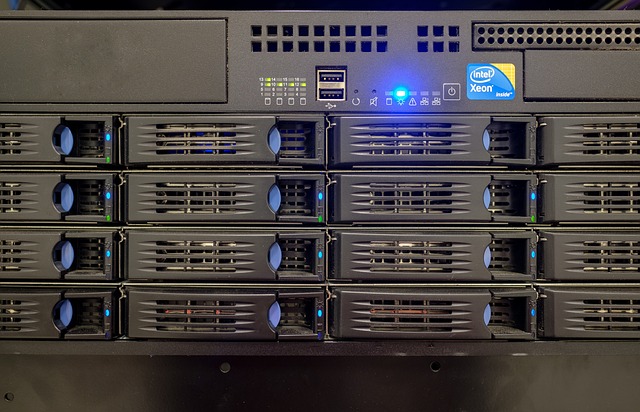
Hello, guys! As we navigate through the digital age, the realm of cloud computing continues to shape the future of technology. In this guide, we’ll unravel the latest trends in cloud computing, exploring how they are reshaping industries and influencing the way we interact with data and applications.
1. Rise of Multi-Cloud Environments
Multi-cloud adoption is on the ascent, with organizations leveraging multiple cloud providers. This trend offers flexibility, mitigates risks, and optimizes performance by distributing workloads across different platforms.
2. Edge Computing’s Growing Importance
Hello, guys! Edge computing is gaining prominence, bringing data processing closer to the source. This is crucial for applications demanding low-latency, such as IoT devices and real-time analytics.
3. Soaring Popularity of Serverless Architectures
Serverless computing is gaining traction, enabling developers to focus solely on coding without managing servers. This approach enhances efficiency and reduces operational costs by charging based on actual resource usage.
4. Integration of AI and Machine Learning
The fusion of cloud computing with artificial intelligence (AI) and machine learning (ML) is transforming industries. Cloud providers are offering specialized services, making it easier for businesses to implement and scale AI and ML solutions.
5. Enhanced Focus on Cybersecurity
As reliance on cloud services grows, cybersecurity remains a top priority. Cloud providers are investing heavily in advanced security measures, including encryption, identity and access management, and threat detection.
6. Containerization and Kubernetes Adoption
Containerization, especially with technologies like Docker, is changing how applications are developed and deployed. Kubernetes, an open-source container orchestration platform, is gaining popularity for automating the deployment and management of containerized applications.
7. Hybrid Cloud Solutions for Flexibility
Hello, guys! Hybrid cloud solutions, combining public and private cloud infrastructures, are becoming mainstream. This approach allows organizations to maintain control over sensitive data in private clouds while leveraging the scalability of public clouds.
8. Quantum Computing Exploration
Quantum computing, while in its early stages, holds immense potential for solving complex problems. The tech world is closely watching how quantum computing could revolutionize data processing and computation tasks.
Conclusion: Navigating the Cloudscape
In conclusion, the trends in cloud computing signal a dynamic and innovative future. Multi-cloud strategies, edge computing, serverless architectures, and the integration of AI are shaping a new era. Embracing these trends will be key to staying competitive and leveraging the full potential of cloud technology.
As we bring this journey through cloud computing trends to a close, it’s apparent that we stand on the precipice of an era defined by innovation and digital transformation. The cloud, once a concept, has become an integral part of our technological fabric, weaving its capabilities into the very essence of how businesses operate and individuals interact with information.
The trends we’ve explored – from the flexibility of multi-cloud environments to the potential of quantum computing – paint a vivid picture of a landscape marked by continuous evolution. Embracing these trends is not merely about staying current; it’s about positioning oneself to thrive in a future where technology’s influence knows no bounds.
Multi-cloud strategies empower organizations to tailor their infrastructure to their specific needs, while edge computing ensures that data is processed at the speed of thought. Serverless architectures liberate developers from infrastructure management, enabling them to focus on innovation. The integration of AI and machine learning unlocks the potential to derive meaningful insights from vast datasets, pushing the boundaries of what’s achievable.
Security remains at the forefront, a non-negotiable aspect of cloud computing. As the cloud becomes the repository of critical data, the industry’s commitment to robust cybersecurity measures is unwavering. With encryption, identity management, and threat detection becoming more sophisticated, businesses can confidently entrust their data to the cloud.
Containerization and Kubernetes redefine how applications are developed, bringing unparalleled efficiency and scalability. Hybrid cloud solutions offer a harmonious balance between control and scalability, allowing organizations to navigate the complexities of data management with confidence.
The tantalizing prospect of quantum computing hints at a future where computational challenges once deemed insurmountable become solvable. While quantum computing is in its infancy, its potential to revolutionize computation and problem-solving is a beacon on the horizon, guiding the way for future advancements in the cloud.
As we bid farewell to this exploration, remember that the world of cloud computing is not stagnant; it’s a dynamic force shaping the future. Stay curious, adapt to change, and embrace the opportunities that these trends present. Whether you’re a tech professional, business leader, or simply someone intrigued by the wonders of technology, the journey through the clouds is one of continuous discovery.
Thank you for joining us on this expedition through the cloud computing trends that define our digital landscape. Until we meet again in other insightful articles, may your ventures into the clouds be marked by innovation, resilience, and boundless possibilities.


